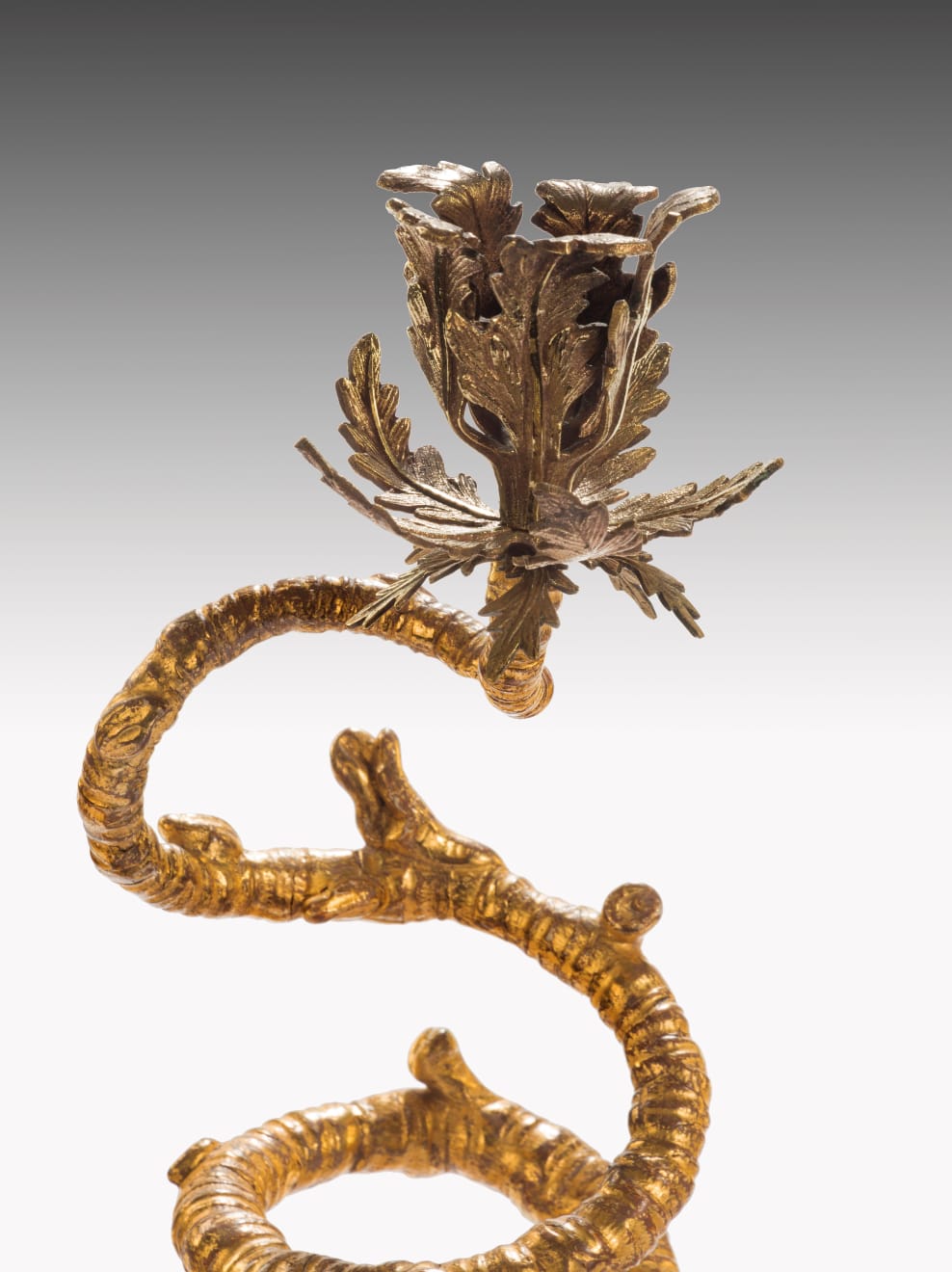Pair of George III Carved Giltwood and Wrapped Wire Candlesticks
ENGLAND, circa 1765
43 x 23 x 15 cm
Each with leaf-cast foliate candle holders and drip pans, supported by spiral branches issuing from a naturalistically carved tree stump. The bases are carved to simulate a rocky outcrop, covered in grass.
These unusual candelabra are designed in the George II ‘picturesque’ manner, which was popularised by patterns issued in Thomas Chippendale’s ‘The Gentleman and Cabinet-Maker’s Director, 1754-1762’ and the carver Thomas Johnson’s publication ‘Twelve Girandoles’ in 1755 and ‘Collection of Designs’ in 1758. The style of the gnarled tree and branches, rising from a rockwork base, mimics that found on a number of mirrors and girandoles.
Comparators: A related pair of George II Giltwood Three-Light Candelabra, dated circa 1755, were sold at Christie New York’s ‘Important English Furniture and Ceramics’ (11th October 2007).
A closely related pair of two branch candelabra, dated circa 1755, was in the collection at Coleshill House, Berkshire, where a letter written by Katherine Pleydell-Bouverie records their presence on the library mantelpiece prior to 1889. The pair was later sold from the collection formed by Marjorie Wiggin Prescott, Greenwich, Connecticut, at Christie’s, New York on 31st January 1981, lot 78.
Another related pair of candlesticks, dated circa 1760, is illustrated in Christopher Claxton Stevens and Stewart Whittington, ‘18th Century English Furniture: The Norman Adams Collection’ (Antique Collectors’ Club, October 1, 1989), pp.446. Rather than being modelled with wire, these twisting branches and leaves are carved from wood.
Another pair of similar design (en suite with wall brackets) may have been supplied to the 4th Earl of Shaftesbury as part of the refurbishment of St. Giles’s House, Dorset (see Anthony Coleridge, ‘Chippendale Furniture: The Work of Thomas Chippendale and his Contemporaries in the Rococo Style, circa 1745-1765’, Faber and Faber, 1968, pl. 314).
Thomas Johnson (1714-1778): was a carver and a gilder, who first published his designs in the publication ‘Twelve Girandoles’ which appeared in 1755. Despite being a slim volume, it served to introduce his work to a wider audience. This was followed by a series of 53 designs published between 1756 and 1757. Johnson was a carver rather than a cabinet-maker, and, as a result, his designs have been seen as far more inventive than those of his contemporary cabinet-makers – such as Chippendale; and Mayhew and Ince. Thomas Johnson played with forms and motifs, experimenting with the design of wall lights, girandoles and console tables. His engravings were frequently so intricate that they could not be completed. As a result, it is feasible that they may have been used as a tool to promote his inventiveness, rather than for practical purposes. In the early 1760s, Johnson is known to have supplied mirrors through the London upholsterer George Cole of Golden Square, Soho, to Paul Methuen at Corsham Court, Wiltshire, and the Duke of Atholl at Blair Castle in the Scottish Highlands.




